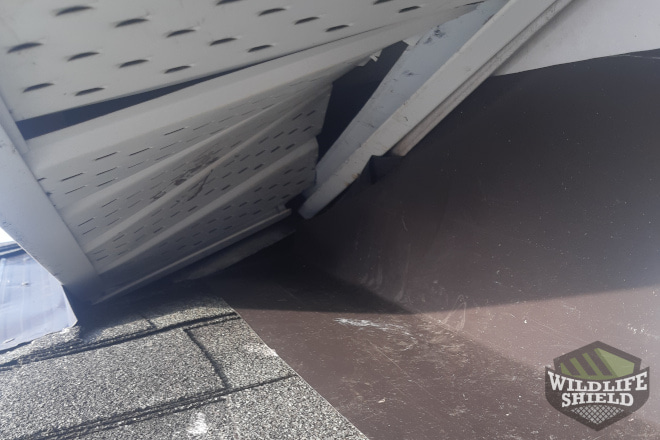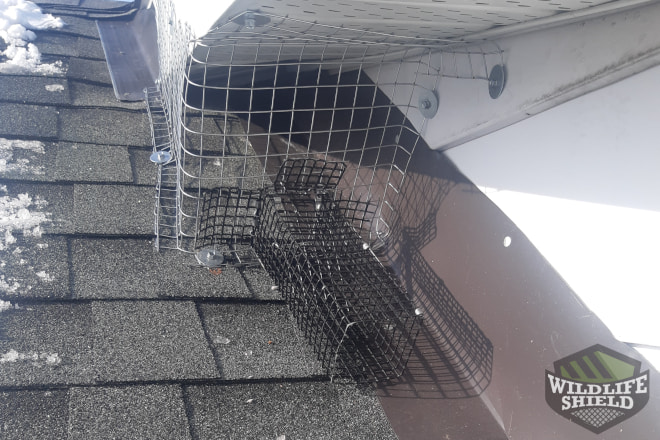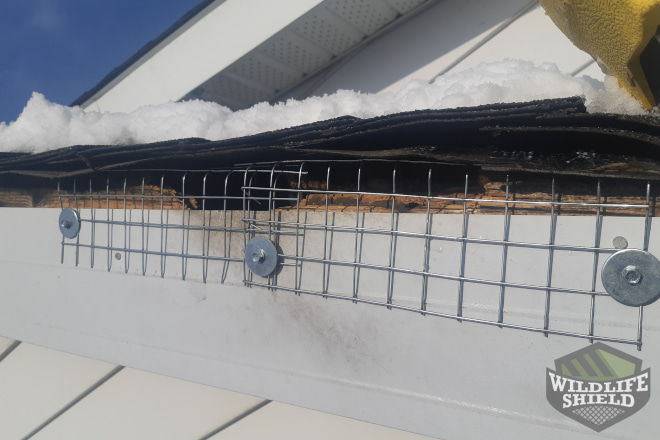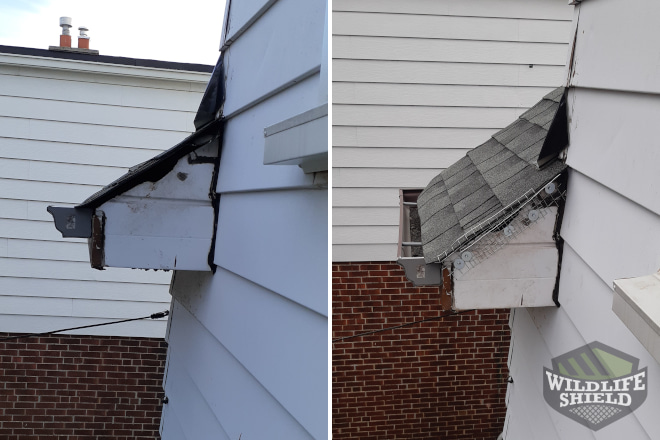The following case study details a squirrel removal job in Toronto, Ontario. The homeowner in this case gave Squirrel Control a call after struggling to get rid of a squirrel in their attic. They could hear the animal making noises in there during the early hours of the day, and they were worried it would cause damage to the house. A technician promptly removed the animal and excluded the roof so it wouldn’t come back. Call Squirrel Control today if you are worried about the squirrels on your property.
Inspection
The first step in the squirrel removal process is to perform an inspection. Even when the location of the nest has already been found, the inspection points out other vulnerabilities that could lead to future invasions. Squirrels will often chew another hole in the roof as soon as they have been removed from their nests. Finding where they might chew can prevent this from happening.
Here, the technician found the entry point where a soffit touched the roof below. This is a common entry point for squirrels and raccoons. While the animals are standing on the roof, they push and chew their way through the soffit. The soffit in this case was severely damaged and left more than enough room for a squirrel to crawl into the attic.

In addition to the soffit, the technician found many cracks and gaps along the edges of the roof. As roofs age, their fascia sometimes pulls away from the framing of the house, which creates openings wide enough to fit squirrels and other rodents. To fix this, the technician recommended having them covered in mesh.

Following the inspection, the technician explained what was happening to the homeowner. To get rid of the squirrel, the technician proposed having a one-way door installed on the soffit. The one-way door is a little contraption made of mesh that lets the squirrel out but prevents it from coming back inside. At first glance, it may look like a trap, but it is open-ended to let the animal out safely. Once out, the squirrel finds another place to live.
The homeowner agreed to have the one-way door installed and the large gap in the fascia excluded right away. As for the rest of the work, they wanted to think on it.
Removal and Exclusion
First, the one-way door was installed on the soffit. To make it fit, the technician surrounded the roof-soffit intersection with mesh, then added in the door. This would let the squirrel out safely, on its own terms. No trapping or direct contact required.

Next, the technician covered the wider gap in the fascia with mesh. This would prevent the evicted squirrel from using this opening to come back inside. Our technicians use this material to cover roof vents, chimneys, soffits, gaps in the roof’s edge, and more.

Within a few days, the squirrel stopped making noises. However, we like to give the situation a little extra time just to be sure. Later, the noises came back. A technician then returned to the scene to investigate.
The squirrel in this case got back into the attic by crawling through an edge in the roof that was no excluded. From there, it could get back to its nest. To fix this, the technician recommended that the one-way door stay where it was, then excluded the gap in the roof’s edge that the squirrel was now using. The homeowner agreed this time to seal this opening and the technician did so right away.

This time, the squirrel left within a few days, and it did not came back. Sealing the other opening in the roof’s edge prevented it from getting back to its nest. The squirrel likely built another nest in a tree nearby.
Conclusion
This case demonstrates how important it is to maintain one’s roof and to exclude it completely. Squirrels are persistent animals that will find a way back if they want to. Given the many openings on the roof, it’s important to have the roof inspected and excluded by a professional.
Give Squirrel Control a call if you suspect that some squirrels have broken into your attic. We provide comprehensive squirrel removal services. We inspect, then remove squirrels humanely while excluding the roof to make sure that they don’t come back. Call Squirrel Control today.